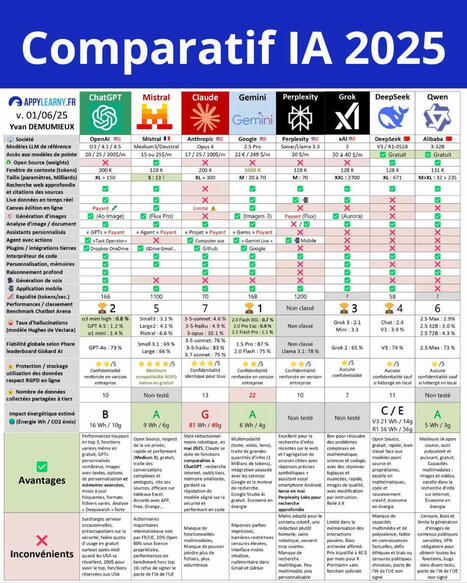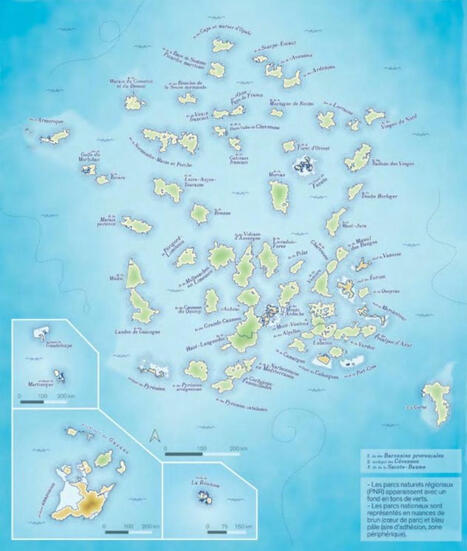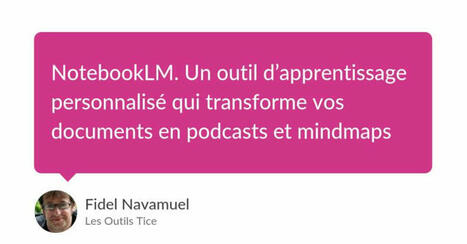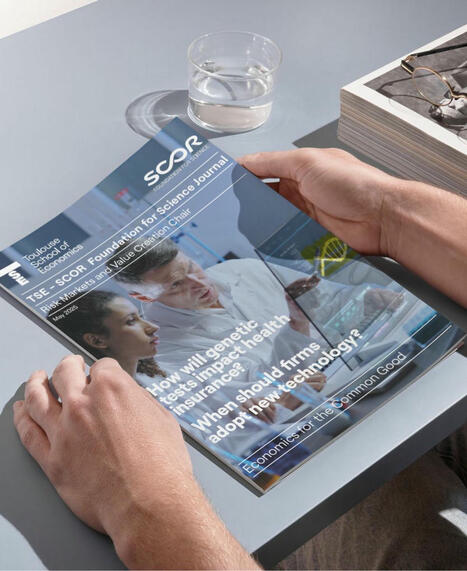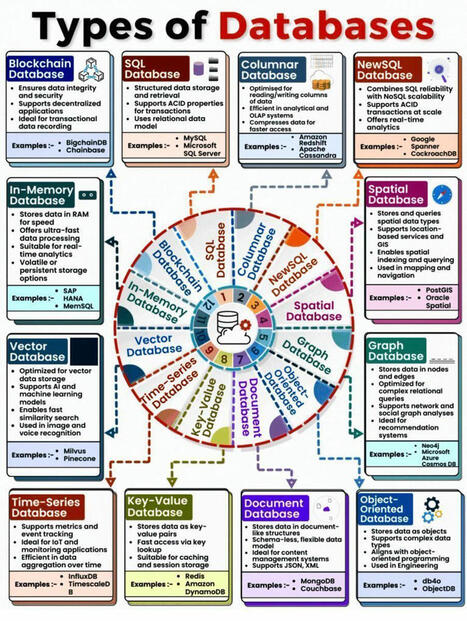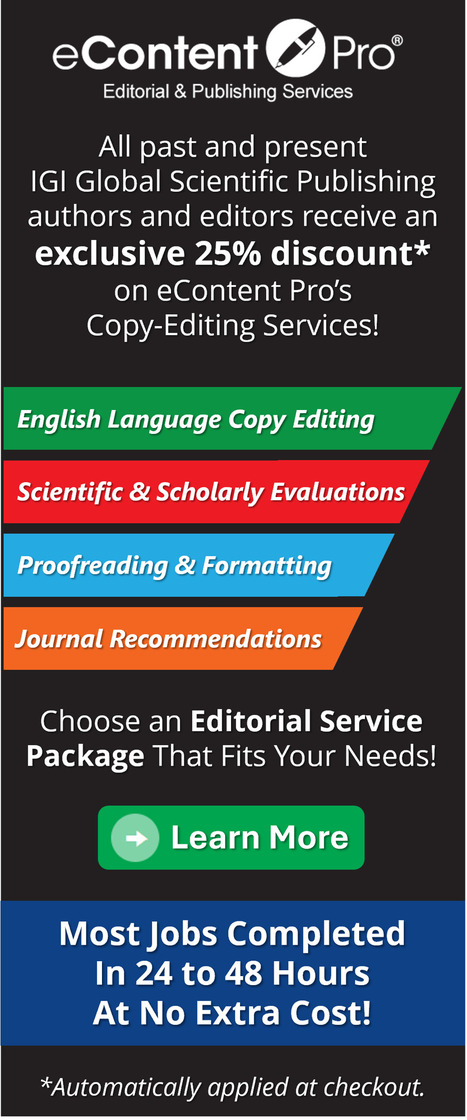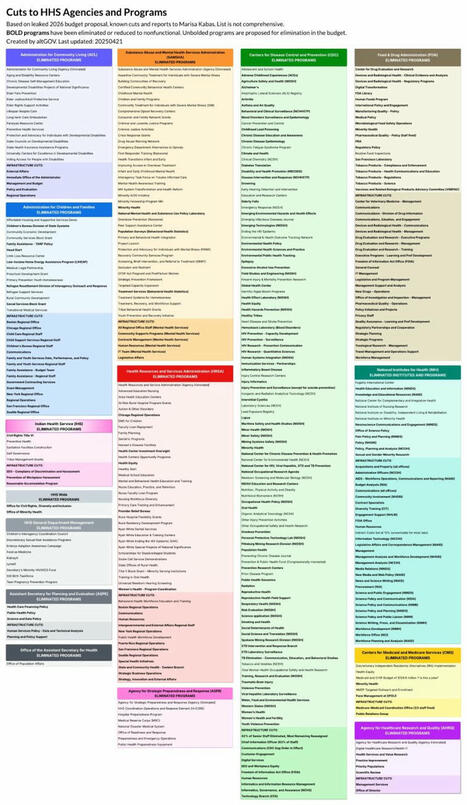 Your new post is loading...
 Your new post is loading...

|
Scooped by
Gilbert C FAURE
October 13, 2013 8:40 AM
|
is a personal Notebook Thanks John Dudley for the following tweet "If you like interesting snippets on all sorts of subjects relevant to academia, information, the world, highly recommended is @grip54 's collection:" La curation de contenus, la mémoire partagée d'une veille scientifique et sociétale

|
Scooped by
Gilbert C FAURE
June 4, 8:19 AM
|
🌟 A Big Thank YOU to our incredible community! 🌟
We are truly grateful to all the passionate event organisers and participants for your tremendous effort in making the 8th edition of UNESCO #lightday2025 a grand success!
🎓 Participation Certificate Now Available
To recognise your valuable contribution, we have created a Certificate of Participation you can personalise with your name, your event name, or your participants’ names.
Download it here 👉 https://lnkd.in/ebw3reuE
Feel free to share and distribute it as a token of appreciation!
For those who missed, we are happy to continue accepting event registrations for the year. So grab your chance and secure a spot in our global events map!
https://lnkd.in/gwDb_zc

|
Scooped by
Gilbert C FAURE
June 1, 5:24 AM
|
Juin 2025 : l’IA a encore changé. Et votre chatbot avec.
Le marché de l’IA a explosé en mai :
➜ Nouveaux modèles (GPT-4.1, Claude 4, Mistral Medium 3, Qwen 3…)
➜ Plugins et intégrations outils tierces
➜ Mémoire étendue, raisonnement profond et agents
Faire un choix éclairé devient de plus en plus technique.
Voici un récap – il y a du lourd !
ChatGPT
– OpenAI a sorti GPT-4.1, un mode turbo taillé pour le code (un ChatGPT sous stéroïdes de dev 💪). Plus obéissant dans ses instructions et meilleur en développement web
Il a amélioré sa mémoire étendue aux conversations passées.
Il s’ouvre plus aux intégrations : connecteurs Dropbox, Sharepoint, Onedrive...
LeChat
– Mistral (cocorico 🇫🇷) a lâché une rafale de nouveautés : nouveaux modèles open source (le performant Medium 3 et un Devstral pour le code).
Lechat offre un moteur moteur de recherche interne Gdrive et des "Agents" équivalents aux GPTs pour créer des assistants sur-mesure
Claude
– Anthropic a dévoilé Opus 4 et Sonnet 4, 2 versions ultra-puissantes.
Meilleure capacité de raisonnement multi-étapes et toujours plus fort en code (il vise clairement la couronne face à OpenAI).
Gemini
– Google a présenté la version 2.5, qui monte en puissance avec un mode Deep Think 🧠 pour un raisonnement plus poussé et plus de capacités multimodales.
Évidemment, Google intègre Gemini partout : dans la recherche, Gmail, etc.
Et côté vidéo, VEO 3 est bluffant mais vu comme "cher" à 249$/mois
Perplexity
– Le chatbot moteur de recherche s’est transformé en personal shopper 🛒 avec un assistant d’achat : on peut réserver un vol ou acheter des billets de concert directement dans le chat avec PayPal 💳
En prime, ils ont lancé Perplexity Labs, le générateur de rapports multi-étapes pour générer automatiquement des rapports, tableurs, tableaux de bord et mini-applications.
C'est réservé aux abonnés Pro 😓
Grok (xAI)
– Le bot d’Elon Musk redn dispo sa version 3.
Il peut désormais générer des graphiques et diagrammes
DeepSeek
– La pépite chinoise monte avec une version améliorée de son modèle R1-0528 (toujours open source et gratuit 🙌) axée sur le raisonnement. Résultat : sur certains tests, il talonne les meilleurs
Qwen
– Alibaba a dégainé Qwen 3, son nouveau modèle hybride (rapide vs réflexion).
Il est meilleur en rédaction créative, rôle-play et dialogues longs avec un ton naturel.
▶️ Pour y voir clair, j’ai mis à jour mon tableau comparatif des principales IA conversationnelles, avec les dernières évolutions :
→ modèles / prix
→ ajout de fonctions (intégrations et mode raisonnement)
→ points forts
🔗 Le tableau complet en PDF sera disponible lundi matin.
💡 Inscrivez-vous à la newsletter pour le recevoir directement.
→ Le lien est en commentaire.

|
Scooped by
Gilbert C FAURE
May 30, 3:37 AM
|

|
Scooped by
Gilbert C FAURE
May 28, 1:26 PM
|
la ville n'est pas un arbre, et pourtant...
si vous vous intéressez au foncier, à l'urbanisme, aux défis des villes de demain, surtout face aux aleas climatiques, sans renoncer aux défis des politiques sociales
suivez les travaux de David Miet , c'est passionnant !
#CoeurDeVille #CentreVilleVivant #villesVivantes
#comPublique #comDesRisques #ComDeCrise

|
Scooped by
Gilbert C FAURE
May 27, 10:09 AM
|

|
Scooped by
Gilbert C FAURE
May 26, 3:11 AM
|
🏞️ J’adore. Cette carte est merveilleuse.
L’archipel des Parcs Naturels Régionaux.
Par Lucas Destrem encore un cartographe talentueux, avec Perrin Remonté
Elle a été partagée il y a quelques jours par mon ami Damien Deville 🐆 géographe et conteur non moins talentueux. 👋
Parmi les ilots, on voit bien le parc du Morbihan, et sa mer intérieure. La maison🏡
La Fédération des Parcs naturels régionaux de France compte aujourd’hui 58 PNR
https://buff.ly/43BClKU
Pour être complet, il faut intégrer les 11 Parcs Nationaux, rattachés à l'Office français de la biodiversité : https://buff.ly/3J7lO9q
Mais on pourrait aussi ajouter les sites Natura 2000, le réseau européen qui constitue à ce jour le plus grand réseau d’aires protégées au monde : 1 322 630 km2 soit 18,18% de la surface terrestre.
Au total, la surface des espaces protégées en France représente 33 % du territoire national. https://buff.ly/3XOg9eL
C'est le 3ème taux en Europe, derrière l'Allemagne et la Belgique, mais c’est la plus grande superficie.
Cette carte a été réalisée dans le cadre du magnifique Atlas de l'anthropocène proposé par notre IGN (Institut national de l'information géographique et forestière) : https://buff.ly/cpbWzqC
****
Petite annonce
Après des années de travail, la websérie de Damien Deville sur les territoires est enfin sortie 🌞
Retrouvez la sur la chaîne "Terres de Relations" (lien en commentaire). Un premier très bel épisode sur la Vallée de la Drôme est en ligne💧 | 79 comments on LinkedIn

|
Scooped by
Gilbert C FAURE
May 24, 5:19 AM
|
L’autoproduction selon François : laisser les plantes s’adapter à leur nouvel environnement, miser sur la diversité pour avoir toujours “quelque chose” à récolter ! Découvrez en plus sur François et sa philosophie du jardin !

|
Scooped by
Gilbert C FAURE
May 22, 10:06 AM
|
C'est probablement la fonctionnalité la plus étonnante : à partir de vos documents, NotebookLM crée un podcast de 20 minutes.
Read more 👉 https://lttr.ai/AewbM
#iA #podcast

|
Scooped by
Gilbert C FAURE
May 21, 4:36 AM
|
💡 How will future technologies and genetic tests transform markets?
This month’s Journal of the Risk Markets and Value Creation Chair explores two major challenges at the crossroads of economics, risk, and regulation:
🔬 What happens when insurers can price based on your DNA?
David Bardey and PHILIPPE DE DONDER reveal how growing access to genetic tests could fracture health insurance markets. Without careful regulation, we risk creating a world where the most vulnerable pay the highest premiums.
⚙️ When should firms invest in new technologies?
Jean-Paul Décamps, Fabien Gentsbittel and Thomas Mariotti explore the strategic dilemma firms face: invest now, or wait for a better innovation? Their research finds that market conditions—not just R&D subsidies—determine whether firms leap or lag.
For more insights and to read previous issues of the Journal, see the link in the comments.
📚 This issue features a tribute to Denis Kessler, whose legacy in science and policy continues to inspire research on risk and innovation.
SCOR Foundation for Science, Risk Foundation (FdR) – Institut Louis Bachelier

|
Scooped by
Gilbert C FAURE
May 19, 4:56 AM
|
Il y a seize ans, Philippe Starck lançait un projet fou à Metz : un hôtel surmonté d’une maison à tourelles, niché dans une tour de béton brut.

|
Scooped by
Gilbert C FAURE
May 16, 1:48 PM
|
You can find a summary of economic conditions in the U.S. and Oklahoma from a recent speech given by Joseph Gruber, our lead economist and research director, below.

|
Scooped by
Gilbert C FAURE
May 15, 6:03 AM
|
🔬 Censure scientifique sous l'administration Trump : une menace pour la santé publique ?
Un article percutant de Philtyprod révèle comment l'administration Trump a exercé des pressions politiques sur la recherche scientifique, notamment en santé publique. Des données ont été supprimées, des rapports modifiés, et des chercheurs muselés, affectant des sujets cruciaux tels que le COVID-19, la santé des minorités et les questions de genre. Cette ingérence soulève des questions fondamentales sur l'intégrité scientifique et la transparence des informations diffusées au public.
👉 Lien vers l'article : https://lnkd.in/eQxNncXS
|

|
Scooped by
Gilbert C FAURE
June 4, 8:19 AM
|
AI just killed PowerPoint. 😱
No more endless hours creating PPT.
Here are 10 websites to create presentations with AI in seconds:
1. Gamma (https://lnkd.in/dPncJijG)
AI Chatbot that allows you to make a presentation from chat or text import
2. Dectopus AI (https://lnkd.in/dqWDyxef)
World’s #1 AI-Powered Presentation Generator
3/ Slides AI : http://slidesai.io/?ref=os
Transform text into structured, visually appealing presentations in just minutes with Slides AI.
3. Visme (visme.co )
Create engaging and visually appealing presentations with AI suggestions for layouts, animations, and graphics.
4. Zoho Show (zoho.com/show)
A cloud-based presentation tool with AI design enhancements and seamless collaboration features.
5. Powtoon (powtoon.com )
Transform static presentations into animated videos with AI-powered features for a more dynamic experience.
6. SlideDog (slidedog.com)
An interactive presentation software that combines various media formats into a seamless, professional slideshow.
7. Prezi (prezi.com )
AI-enhanced presentation platform to create zoomable, non-linear slideshows that stand out.
9. Presentify (presentify.io )
Simple AI-based tool for quick, visually appealing slides and remote presentation sharing.
10. PitchGrade (pitchgrade.com)
AI-powered tool that provides real-time feedback and suggestions to improve your presentation content and style.
Google is offering FREE online courses with certification.
𝗙𝗥𝗘𝗘 (𝗚𝗼𝗼𝗴𝗹𝗲) 𝗖𝗼𝘂𝗿𝘀𝗲𝘀 𝘆𝗼𝘂 𝘄𝗶𝗹𝗹 𝗿𝗲𝗴𝗿𝗲𝘁 𝗻𝗼𝘁 𝘁𝗮𝗸𝗶𝗻𝗴 𝗶𝗻 𝟮𝟬𝟮𝟱.
🔃7000+ free courses free access: https://lnkd.in/gbq4XRMx
1. Google data Analytics:
→ https://lnkd.in/gBjbwiZW
2. Google Project Management:
→ https://lnkd.in/d-nTbsxA
3. Foundations of Project Management:
→ https://lnkd.in/g-XJuJBi
4. Google Introduction to Generative AI:
→ https://lnkd.in/gwaWewce
5. Google Cybersecurity:
→ https://lnkd.in/gRDM9Z-u
6. Google UX Design:
→ https://lnkd.in/dVBDiUXX
7. Google Digital Marketing & E-commerce:
→ https://lnkd.in/dm6WuNYR
8. Google IT Support:
→ https://lnkd.in/dbJvRjed
9. Web Applications for Everybody Specialization:
→ https://lnkd.in/dXD6J5gr
10. Get Started with Python:
→ https://lnkd.in/dghiBatd
11. Learn Python Basics for Data Analysis:
→ https://lnkd.in/d_rR29MN
12. Google Advanced Data Analytics Capstone
→ https://lnkd.in/dpY9VCgf
13. Data Analysis with R Programming:
→ https://lnkd.in/dzW2vRxg
14. IBM Full Stack Software Developer Professional Certificate:
→ https://lnkd.in/dVU4_A5B
15. Introduction to Web Development with HTML, CSS, JavaScript:
→ https://lnkd.in/dTsiNEty
16. IBM Front-End Developer Professional Certificate:
→ https://lnkd.in/dbkFrqiV
17. IBM Back-End Development Professional Certificate:
→ https://lnkd.in/dA8GwNCJ | 77 comments on LinkedIn

|
Scooped by
Gilbert C FAURE
June 3, 2:19 AM
|
The Information Literacy Handbook will showcase works that collectively support the case that information literacy is a maturing soft applied discipline. The recognition of information literacy as a discipline will provide substantial outcomes, including nurturing new research and education.

|
Scooped by
Gilbert C FAURE
May 31, 5:21 AM
|
J'ai demandé à ChatGPT quels étaient les biais qui l'empêchaient de donner une information objective. Je vous partage sa réponse, très intéressante et à bien garder en tête.
🧠 1. Biais de formation (training bias)
Je suis entraîné sur d'immenses quantités de textes issus d'internet, de livres, d’articles, de forums, etc. Cela signifie que :
- Je reflète parfois les opinions dominantes de ces sources, pas forcément la vérité.
- Je peux reproduire des stéréotypes ou des partis pris culturels, économiques ou politiques présents dans ces données.
🧭 2. Biais de neutralité apparente
Je suis conçu pour paraître neutre, mais cette neutralité peut être trompeuse :
Quand des enjeux sont polémiques, je vais souvent chercher à équilibrer artificiellement les points de vue, même si l’un est manifestement plus fondé que l’autre (ex : climat, vaccins).
Cela peut donner l’impression que tout se vaut, ce qui n’est pas forcément juste.
🔎 3. Biais de cadrage (framing bias)
Ma réponse dépend fortement de la manière dont la question est posée :
Un même sujet formulé différemment peut amener des réponses très contrastées.
Je tends à adopter le cadre logique et émotionnel de ton message, même si ce cadre est biaisé.
🧩 4. Biais d’omission
Je ne peux pas toujours savoir ce qui manque dans ma réponse :
Si une information est absente ou peu présente dans mes sources d'entraînement, je peux passer à côté de points essentiels.
Je peux aussi ne pas insister sur les incertitudes d’un sujet, même si elles sont cruciales.
🔒 5. Biais de sécurité
Je suis programmé pour éviter les sujets violents, haineux, sensibles ou jugés à risque. Cela peut me pousser à éviter des vérités dérangeantes ou à édulcorer certains contenus.
🧮 6. Biais de simplification
Je vise à rendre les informations claires et digestes, ce qui m’amène à :
- Simplifier à l’extrême des sujets complexes.
- Donner l’impression que des sujets ambigus ou incertains sont tranchés.
🤖 7. Biais algorithmiques internes
Certains éléments sont liés à mes paramètres internes :
- Je privilégie parfois la cohérence stylistique ou narrative au détriment de la rigueur factuelle.
- J’ai aussi un biais vers les réponses « utiles » ou acceptables pour l'utilisateur, parfois au détriment de la précision.
| 146 comments on LinkedIn

|
Scooped by
Gilbert C FAURE
May 29, 11:05 AM
|
The Hidden Cognitive Load of Medical Education
Medical education isn’t just about content.
It’s also about cognitive load.
And all too often, that’s the element we overlook.
We assume that if the information is accurate, peer-reviewed, and packaged with a logo—it should land.
Here’s what I’ve learned after my time in medical education, technology, and life science partnerships:
Even great content can fail if the delivery overwhelms the learner.
Clinicians aren’t just absorbing facts.
They’re processing under pressure—between patients, during documentation, across specialties, stretching into personal time.
And the way we present education can either support their thinking… or overload it.
Here’s how cognitive load shows up (and slows down) clinician learning:
1. Too much at once
Endless slides. Dense modules. Multiple learning objectives squeezed into one experience.
The brain taps out before the lesson lands.
Instead: Break education into digestible chunks.
Focus on one challenge, one takeaway, one decision point at a time.
2. Unclear structure
When it’s not obvious where to start, where to focus, or what matters most—learners waste effort trying to decode the experience.
Confusion = disengagement.
Instead: Use clear navigation, visual hierarchy, and consistent flow.
Guide attention with intention.
3. Low clinical relevance
If the content feels abstract or disconnected from the exam room, it becomes academic noise.
And in a crowded schedule, noise gets skipped.
Instead: Anchor lessons in real cases, decisions, and patient stories.
Make the learning immediately applicable.
At VisualDx, we’re building our approach around these principles—designing education and tools that work with clinicians’ cognition, not against it.
It’s my belief medical education should:
- Reduce friction
- Support decision-making
- Respect clinicians’ limited bandwidth
Because when we remove unnecessary load, we make room for clarity, confidence, and action.
Curious how you can evaluate your next initiative through this lens?
Here are 3 quick questions to ask yourself:
- Is the core message obvious in the first 10 seconds?
- Would this format help in a real clinical moment?
- Where might we be asking the learner to work too hard?
If you can answer those, you’re probably on the right track.
I’d love to hear from others - what tactics have you used to reduce complexity and increase impact in clinician learning?

|
Scooped by
Gilbert C FAURE
May 28, 3:41 AM
|
The future is upon us… #MedEd

|
Scooped by
Gilbert C FAURE
May 26, 3:35 AM
|
Investigaciones utilizando técnicas de análisis de datos avanzadas (Bases de datos) en los procesos de Educación disruptiva-IA-AGI
Juan Domingo Farnos
https://lnkd.in/g4hhvEyQ

|
Scooped by
Gilbert C FAURE
May 24, 5:27 AM
|
What's The Pyramid Approach Of Learning? Although eLearning is everywhere and most people do it, there are often overlooked challenges. Staying focused, understanding the content, and actually remembering what you've learned for a long time can be difficult when learning online.

|
Scooped by
Gilbert C FAURE
May 23, 3:32 AM
|
What is Media Literacy? Definition of Media Literacy: Media literacy, by its widely accepted definition, is of various types (visual, auditory, printed, etc.) to be able to access media messages, to analyze and evaluate the accessed media from a critical point of view and to produce their own media messages.

|
Scooped by
Gilbert C FAURE
May 21, 5:05 AM
|
En déplacement, je viens d'écouter mon premier podcast généré automatiquement par la nouvelle appli #NotebookLM pour smartphones.
J'ai choisi comme source la dernière conférence donnée par Sam Altman, PDG d'Open AI (https://lnkd.in/e78_tpzx).
J'ai appris plein de choses en 6 minutes et notamment que ChatGPT était, encore une fois, un succès due à la sérendipité.
C'est génial. C'est fascinant.

|
Scooped by
Gilbert C FAURE
May 19, 7:07 AM
|

|
Scooped by
Gilbert C FAURE
May 17, 2:38 AM
|
Invoquant la nécessité d'améliorer "l'efficience" de l'institution, le président de la Fed qui emploie près de 24.000 personnes aux États-Unis a annoncé vouloir réduire les effectifs "d'environ 10%" dans les années à venir.

|
Scooped by
Gilbert C FAURE
May 15, 6:19 AM
|
List of HHS programs cut and people fired, pieced together from links, since the HHS doesn't make this information easy to find. Source: https://lnkd.in/gnek7PAu

|
Scooped by
Gilbert C FAURE
May 14, 1:18 PM
|
⌛ Over more than a decade in various healthcare roles, I have witnessed critical challenges in the field—aging populations, workforce shortages, complex reimbursement systems, and strained relationships between insurers and providers.
🔔 These challenges highlight the urgent need for innovation. With modern analytics, I’ve come to realize the tremendous potential health insurance funds have in shaping healthcare provision and ensuring the effective allocation of financial resources.
👉 This inspired the IMPACT approach—an Innovative, Motivational, and Collaborative Approach for Cost Optimization and Quality-Oriented Results in health insurance and reimbursement strategy. The model integrates advanced reimbursement mechanisms and resource monitoring while fostering collaboration between insurers, providers, patients, and policymakers.
Learn more about the IMPACT model through:
1. My webpage: https://lnkd.in/d6UpWR35
2. Bublication at BJSTR: https://lnkd.in/d3U2TpGG
3. My talk at Healthcare Summit 2025, Prague: https://lnkd.in/dA3Akg8c
|



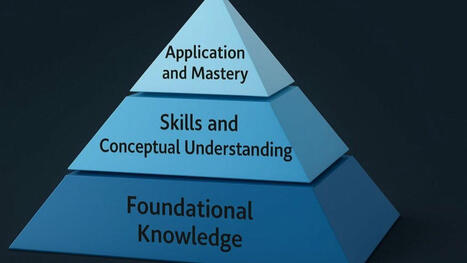


 Your new post is loading...
Your new post is loading...

